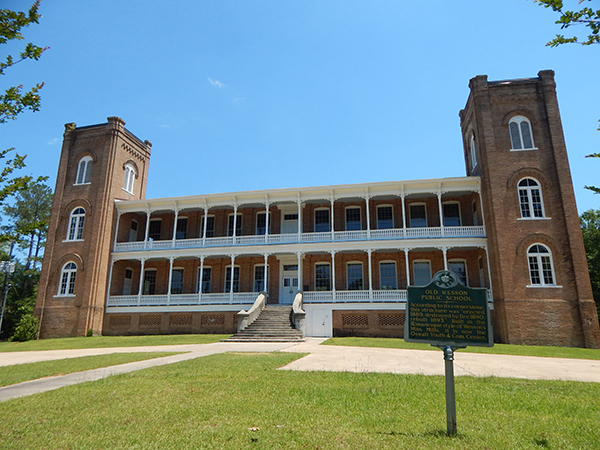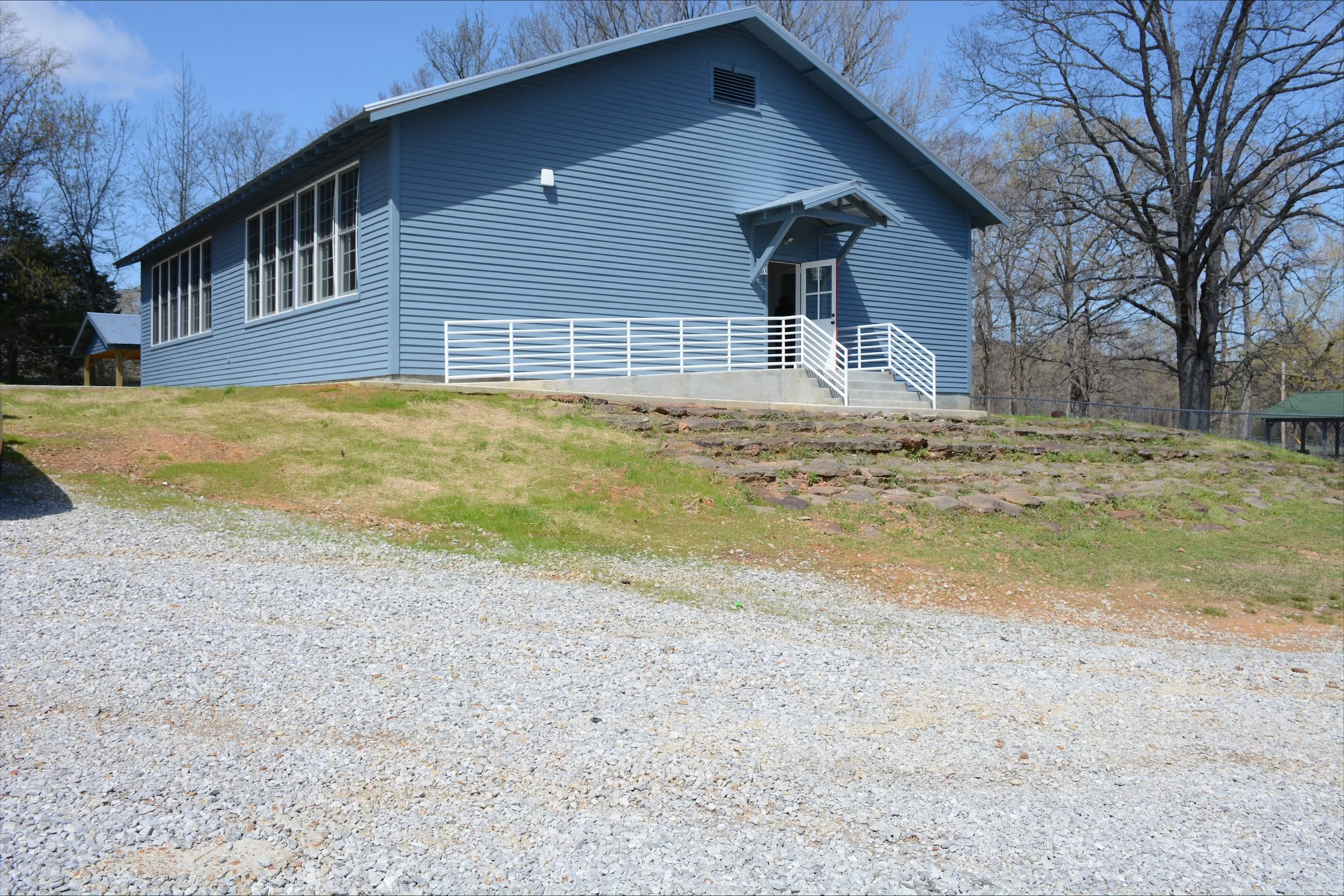2001
Greek Revival Homes of the Delta
Burrus House
Statewide
There are several Greek Revival houses throughout the Mississippi Delta that hold historical significance. The Pugh-Blundell house is currently being restored. The Restoration and Beautification Foundation of Yazoo City owns the Pugh-Blundell House and has proven to be good, protective guardians of the Greek revival home and is working to restore the Pugh-Blundell house. Several of the other houses have been fully restored such as the Burrus House and the Griffin Spragins House. Following a long and loving restoration, the Burrus House can currently be rented for special occasions and events. Eustace H. Winn IV and the descendants of the Burrus family brought the house to its present state of restored grandeur. The Griffin Spragins House has also been fully restored and is lovingly cared for and is the private residence of Walley Morse.
Hawkins Field Old Terminal
Jackson
The Terminal Building at Hawkins Field in Jackson was constructed in 1936 with Works Progress Administration labor and is one of only a few intact civil aviation facilities still in existence. In 1941, Hawkins Field was designated as the Jackson Air Base and the Netherlands Military Flying School used the base to train Dutch pilots during World War Two.
Mississippi Industrial College
Holly Springs
Founded in 1905 on the outskirts of Holly Springs, the Mississippi Industrial College trained young African Americans for 77 years under the sponsorship of the Christian Methodist Episcopal Church. Between 1906 and 1982 the school expanded from two original buildings to ten structures, including dormitories, classroom buildings, teachers’ houses, and a gymnasium. Today, four of the historic buildings remain. Nearby Rust College has acquired the property and is working to reimagine the former college to meet the current needs of its students and engage the surrounding community with educational programming that honors the legacy of Rust College alumnus, crusading journalist Ida B. Wells.
Moore Fire Tower
Forest
Located in the Bienville Ranger District of the Mississippi National Forests, the Moore Fire Tower was constructed in 1940 by the Civilian Conservation Corps to identify forest fires in the area. The 100-foot-high tower, constructed with steel A-frames, is the only one of its type in Mississippi. Faithfully manned since 1940, the tower was retired from service in 1996 due to the increasing use of aircrafts for fire detection. At one point left in a critical state of disrepair with rotting steps, a leaking roof and failing metal frame joints, the Mississippi Forestry Service has since restored the Moore Fire Tower.
Old Wesson Public School
Wesson
A two-story Romanesque Revival style building constructed in 1893, the Old Wesson School has an unusual industrial appearance and may have been designed by the same architect and in the same style as the original Mississippi Mills buildings. Once in a state of disrepair, the building has been restored using funding from the Community Heritage Preservation Grant Program. Though it was being used as an event venue, the Covid-19 Pandemic halted that activity, and now the building sits well preserved but mostly vacant.
Rosenwald Schools
Statewide
In the 1920s and 1930s, thousands of schools were built in rural areas of the South for African American communities through a program developed by philanthropist Julius Rosenwald and Booker T. Washington. Only a handful of the original five hundred and fifty-seven Rosenwald schools constructed in Mississippi remain. On June 10, 2014, the Mississippi Heritage Trust presented Heritage Awards to four Rosenwald schools- the Randolph school in Pass Christian, Bay Springs School in Kelly Settlement, Prentiss Normal Institute and the Walthall County Training School.
The Cedars
Jackson
One of Jackson’s oldest remaining residences, the Cedars was constructed around 1840 as a two-room galleried cottage. Once threatened with demolition, the Cedars is now home to an art gallery and is used for events. The Cedars represents a tremendous effort on the part of the Fondren Renaissance Foundation and the many people in the Fondren neighborhood and others who gave time and money to save the house in its original location and restore it as a community resource.
Dairy Farms of Oktibbeha County and the Old Co-Op in Starkville
Starkville
Opened in 1929 with great fanfare and high expectations, the Cooperative Creamery in Starkville represented the growth and importance of the dairy industry in Mississippi following the decline in the cotton culture. At its height in 1958, Oktibbeha County’s dairy industry relied on 123 family-run dairy farms. Development has mostly erased the agricultural history of the area.
The Watkins Museum
Taylorsville
Constructed in 1901, this wooden structure served as a newspaper office and still houses the 19th century presses used to produce The Signal. Once threatened by neglect, the building has been restored as a museum that tells the story of early life in Taylorsville and the history of journalism in Mississippi.
Rippy Road and the Turkey Creek Community
Gulfport
The Turkey Creek Community in North Gulfport is one of Mississippi’s strongest examples of how grassroots preservation can transform a place. Founded after the Civil War by formerly enslaved people, Turkey Creek served as both a residential and recreational haven during segregation, when Black residents were barred from Gulf Coast beaches. Over the past two decades, residents have fought back against encroaching development, flooding, and infrastructure projects that threatened to erase their history.
The 10 Most listing helped draw early attention to the community’s significance, sparking broader support that eventually led to its placement on the National Register of Historic Places in 2007. Today, Turkey Creek remains a powerful model of perseverance—its residents continue to protect the neighborhood’s cultural landscape through projects like the “Turkey Creek 360” community vision plan, environmental restoration work, and the preservation of key landmarks such as the Turkey Creek Colored School and historic cemetery. Though surrounded by highways and ongoing development, Turkey Creek endures as a testament to the strength of place, memory, and community-led preservation.

